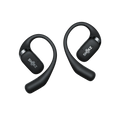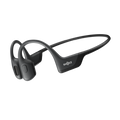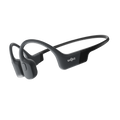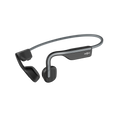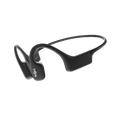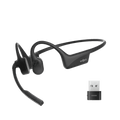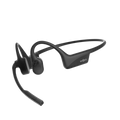Welcome back to Shokz School! Class is now in session and this lesson is all about audio science. If you’ve ever worn or owned a pair of Shokz, you’ve probably noticed a unique aspect that has always set us apart from other audio products: bone conduction technology. Our signature open-ear design and patented listening technology go hand-in-hand, and they are also the main reasons why Shokz has always been an innovative alternative to traditional in-ear headphones.
Read on to get an in-depth understanding of how bone conduction works and learn how Shokz has continued to evolve our engineering techniques to improve the lives of everyone who slips on a pair of Shokz.
Understanding Bone Conduction Terminology
In order to get a full picture of the bone conduction phenomenon, it’s important to first learn the lingo. Get a crash course in the vocabulary we’ll be using throughout this quick audio science lesson below:
Transducer - A device that converts one form of energy into another form
Cochlea - Also known as the “hearing organ”; the part of the inner ear that converts mechanical energy (vibrations) into nerve impulses (sound) that is then recognized by the brain as audio
Audiology - The scientific study of hearing, balance, and related hearing disorders
Conduction - The process by which sound waves travel through a medium
What Is Bone Conduction, Exactly?
Although it may seem like a revolutionary concept, bone conduction is nothing new! The hearing phenomenon was discovered in the 1500s by Italian physician and mathematician, Girolamo Cardano. After realizing that he could hear through a rod or spear when placed between his teeth, Cardano recorded his findings in his publication De Subtilitate, which would become a foundational resource for audiology centuries later.
As we understand it today, bone conduction is the transmission of sound vibrations to the inner ear (cochlea) bones of the skull, which allows the hearer to perceive sound without blocking the ear canal. Even more simply put: it’s sound that is delivered directly to the inner ear without needing to pass through the eardrum. Think of bone conduction as a shortcut to hearing sound. Ever plugged your ears and sang a song, but wondered how you can still hear the tune? That’s bone conduction at its finest, and, along with more commonly used air conduction, your ears have been transmitting sound that way all along!
How Bone Conduction Works With Shokz
Now that we have a better understanding of bone conduction, let’s dive into how the concept has been adapted for the technology you use and love today. Just like bone conduction occurs in everyday life (like the example of singing a song to yourself mentioned earlier), Shokz has mastered this natural phenomenon by adapting it to listening devices, and it’s now the secret behind the success of our open-ear headphones and headset.
#1 Sound Waves Enter The Transducer
The constant evolution and advancements of bone conduction technology are directly related to how the audio quality of Shokz models has improved with each new model produced. For example, did you know we’re currently on our 8th generation of bone conduction technology? You can find the newest improvements to our audio tech in OpenRun, our best-selling endurance headphones. And Shokz audio quality wouldn’t be as top-notch as it is without the help of an essential engineering component. That’s where your transducers come in! Every Shokz audio device features one transducer on each side of the device. These transducers are positioned near the cheekbone and they work to convert mechanical energy (vibrations) into the inner housing and titanium frame of your device by vibrating rapidly like a pendulum.
#2 Titanium Makes Conduction Seamless
The use of titanium in the frame of all Shokz products is not only because of its lightweight and flexible properties, but also because titanium is an ideal metal for properly and efficiently conducting sound waves. This helps preserve rich, dynamic sound as the vibrations are converted through the transducer and into the speakers on each end of your Shokz device.
#3 Vibrations Are Converted Into Audible Sound
Typically, the transducer vibration sensation is felt by the wearer as a light tingle or “buzz” on their temples, and advances in transducer development has enabled us to create devices that minimize the sensations for the wearer while still retaining high-quality sound. The result is better bass performance, which is what gives Shokz headphones an added audio boost without ever covering your ears.
Are you more of a visual learner? Check out the How It Works page on our Shokz website for some helpful illustrations!
Shokz patented bone conduction technology has evolved almost every day since we started our company journey in 2011. We’re learning more unique and innovative ways to make our products even more revolutionary with every second, and now you know just as much as we do! We hope this lesson into what makes our audio devices click has helped you become an expert in the fascinatingly scientific world of open-ear listening.
Did you like this deep-dive blog post about how bone conduction works? Discover The History of Bone Conduction next!
